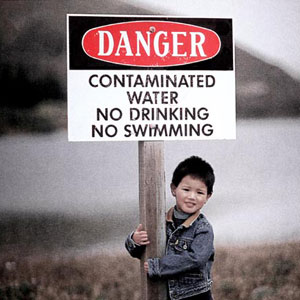 by Rachel Lincoln Sarnoff, Executive Director/CEO Healthy Child Healthy World
by Rachel Lincoln Sarnoff, Executive Director/CEO Healthy Child Healthy World
September is National Childhood Cancer Awareness Month and it really strikes an emotional chord with us here at Healthy Child. Our organization began after five-year-old Colette Chuda died of a rare form of non-hereditary cancer caused by environmental factors. Her parents, Jim and Nancy Chuda, turned their grief into action and started this extraordinary movement in 1992 – because preventable childhood cancers are totally unacceptable. So, this year, for Childhood Cancer Awareness Month, let’s focus on prevention – starting with carcinogenic chemicals found in our everyday environments.
A Report on Carcinogens released in June by the National Institutes of Health lists 240 substances as causing cancer, including commonly identified carcinogens such as tobacco smoke and asbestos, or “reasonably anticipated” as human carcinogens, such as chloroform and diesel exhaust. (To give you a better idea of what we’re up against, according to the New York Times, this report was delayed for four years by chemical industry lobbyists.)
As this list of carcinogens grows, so do the rates of pediatric cancer, which is now the leading cause of death by disease among U.S. children and has shown a nearly 29% increase in diagnosis over the past 30 years. And, while survival rates have also increased, the impacts of treatment create their own domino effect.
Treatments kill cancer cells, but they damage healthy cells as well, causing complications from heart problems and decreased IQ to reproductive problems and decreased lung function. While many of the same interventions such as chemotherapy, radiation and surgery are used to treat both children’s and adults’ cancers, children are more apt to suffer significant long-term impacts. In addition, according to the Journal of Clinical Oncology, survivors of childhood cancer have a mortality rate more than ten times higher than the general population’s due to the long-term effects of treatment. (Read more about these studies and others in the Healthy Child Healthy World Perspective on Pediatric Cancer, which you can download here.)
Clearly, prevention is preferable.
And, on that note, the 2008-2009 annual President’s Cancer Panel Report, released in May 2010 acknowledged that “children are far more susceptible to damage from environmental carcinogens and endocrine-disrupting compounds than adults, and recommended that parents and child care providers choose foods, house and garden products, play spaces, toys, medicines and medical tests that will minimize children’s exposure to toxics. Ideally, parents should avoid exposure to endocrine-disrupting chemicals and known or suspected carcinogens prior to a child’s conception and throughout pregnancy and early life, when risk of damage is greatest.”
Healthy Child Healthy World’s 5 Easy Steps include recommendations that address the concerns of these and other groups of scientists and pediatricians in regards to pediatric cancer. They include:
Avoid Pesticides: Use non-toxic or least toxic pest remedies such as soap water to kill ants and boiling water to kill weeds. Prevent pests through good sanitation. Remove shoes before entering your home to prevent tracking in pesticides.
Use Non-Toxic Products: Read labels and ask questions about what chemicals are in the personal care and cleaning products, as well as furnishings, that you buy. Look for products made from natural, rather than synthetic, materials.
Clean Up Indoor Air: Use non-toxic products, utilize plants to filter indoor air, and open windows for a few minutes a day to ventilate rooms.
Eat Healthy: Choose to eat and prepare organic, whole foods rather than packaged foods whenever possible. Reduce meat intake and include more nuts, seeds, whole grains and produce.
Be Wise With Plastics: Reduce the use of plastics, especially with foods and beverages. For example, opt for filtered water in a stainless steel reusable water bottle rather than single-use, plastic bottled water and reusable glass storage containers over plastic. If you do buy plastic, chose safer plastics #2, 4 or 5.
If you have or know a child with cancer, we encourage you to connect with Mira’s Movement, a non-profit started by Healthy Child Mom on a Mission nominee Christine Brouwer after losing her four-year-old daughter to complications from brain cancer. Their mission is to increase public awareness of the incidence and impact of childhood cancer, to provide resources and support for families facing a pediatric cancer diagnosis, and to broaden support for increased federal funding of pediatric cancer and brain tumor research.
[…] a full range of water bottles and steel Stainless Steel Water Bottle Kids for children. Find bottles of filtered water, Stainless Steel Sippy and bottles with filtered […]